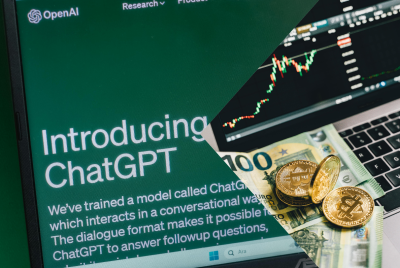AI Won't Be Fair Without a Blockchain Base Layer
Blockchain is the missing layer for fair, auditable, and sovereign AI systems.

AI today is framed as an arms race with trillion-dollar giants hoarding GPUs and pouring billions into mega-models. The assumption is that sovereignty requires $60 billion (approximately £46 billion) data centres and endless scale. But real AI sovereignty won't come from size, but from building a new base layer on-chain that secures attribution, incentives, and ownership for the intelligence economy.
If Bitcoin decentralised money and Ethereum decentralised finance, the next logical step is decentralising intelligence itself.
From mega-models to domain-specific intelligence
The future of AI isn't 'one model to rule them all.' It's thousands of specialised models fine-tuned for trading, cybersecurity, and more. We don't expect one human to be the best trader, lawyer, and engineer simultaneously. Why expect the same of AI?
Specialised AI thrives on high-quality, domain-specific data. A trading AI fueled by granular order book data, liquidity pools, and on-chain flow will consistently outperform a generic model scaping headlines. A legal AI trained on court transcripts outperforms one fed on Wikipedia. The issue is, the experts generating this data, scientists, traders, engineers and lawyers, are almost never rewarded for their contributions.
That's the same extractive cycle Web2 perfected, with users creating the value, and platforms capturing it. On-chain AI offers a different path.
Why attribution works better on-chain
Attribution in giant, generalist models is messy. Trillions of tokens across billions of parameters blur the signal beyond recognition. But in specialised models, attribution is feasible. For instance, a DeFi agent can connect its trade execution to specific order flow signals.
When attribution is measurable, it needs to be anchored on-chain so that every inference output can reference the data sources that shaped it; smart contracts can issue micropayments to contributors in real time and transparent, immutable ledger can ensure credit and compensation can't be erased or rewritten.
Without an on-chain system of record, attribution risks becoming another opaque promise that's unverifiable, unenforceable, and easy for incumbents to co-opt.
Why it matters for crypto
This imbalance is baked into the systems we already use. Google Maps makes $11 billion (approximately £8.4 billion) a year, nearly $30 million (approximately £23 million) every day, from user data, while the people generating that data get nothing.
Crypto was created to reject exactly this model that intermediaries capture all the upside while users take the risk. If AI evolves inside closed systems, we lock the intelligence economy into the same exploitative structure Web2 perfected.
On-chain attribution and incentives are the only way to ensure the intelligence we all help create doesn't become another asset strip-mined by trillion-dollar silos.
Building a payable data economy
AI must become payable. If your data makes a model smarter, you should earn from every output that relies on it. That's the core of a payable data economy, a system where anyone can contribute proprietary knowledge, models consume that knowledge to improve intelligence and contributors earn on-chain micropayments whenever their input influences an output.
On-chain attribution unlocks a new kind of two-way market where those fuelling intelligence finally share in its value.
From Real-World Assets to intelligence as an asset class
Crypto already has a blueprint in the form of tokenisation of real-world assets (RWAs). Just as tokenisation brings provenance, ownership, and yield to physical assets, intelligence can be tokenised. In this case, data becomes a yield-bearing asset when tied to attribution, models become tradeable, auditable on-chain assets and knowledge itself gains provenance and value in transparent markets.
Blockchain as the missing infrastructure layer
Blockchain provides the accountability AI lacks. On-chain logs tie outputs to contributors and datasets. Data and model rights can be encoded, traded, and governed transparently, and smart contracts route value directly back to those whose knowledge powers intelligence.
AI requires a new economic base layer and blockchain provides it, anchoring attribution, rewards, and governance at the very core of intelligence.
Closed economies of intelligence
The danger isn't Big Tech building smarter models, it's them building closed economies of intelligence, where every dataset, improvement, and dollar of value is trapped inside trillion-dollar silos.
The question now is who will own AI transformation. Keep intelligence off-chain, and the answer is already decided, with a handful of corporations owning the future of thought itself. Put it on-chain, and for the first time, intelligence becomes a public good that's open, auditable, and collectively owned.
About the Author: Ram Kumar is a core contributor at OpenLedger, a new economic layer for AI where data contributors, model builders, and application developers are finally recognised and rewarded for the value they create. X: https://x.com/Ramkumartweet
© Copyright IBTimes 2025. All rights reserved.





















